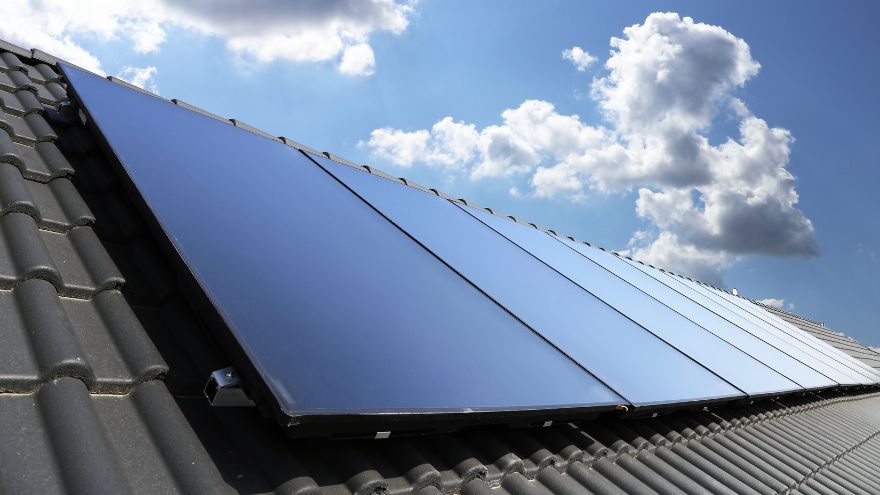Photovoltaics is undoubtedly a combination of ecology and savings. Of course, it should be remembered that not all panels are equally good and effective. Today we will consider whether it is worth investing in bifacial panels.

Check out the photovoltaic panels at the Onninen wholesaler
Basic Differences: Bifacial vs. Traditional Panels
Bifacial panels are panels that have double glass solar modules. They have cells in the front and also in the back. Thanks to the use of transparent glass, the sun's rays pass precisely under and through the panels and charge the solar cells. Of course, this solution allows for the production of up to 30% more energy than in the case of traditional panels.
 Standard photovoltaic panels only have glass on the front, which of course means they are unable to produce as much energy. In addition, bifacial panels reflect light better. In the case of traditional photovoltaic cells, the efficiency is around 70%, while in the case of bifacial it is much higher. Photovoltaics based on bifacial panels allows the use of sunlight that is reflected from the ground. Of course, this is not the only difference between double-sided and single-sided models.
Standard photovoltaic panels only have glass on the front, which of course means they are unable to produce as much energy. In addition, bifacial panels reflect light better. In the case of traditional photovoltaic cells, the efficiency is around 70%, while in the case of bifacial it is much higher. Photovoltaics based on bifacial panels allows the use of sunlight that is reflected from the ground. Of course, this is not the only difference between double-sided and single-sided models.
You also need to know that bifacial panels take up less space. Of course, they are also more expensive, but on the other hand, such an investment pays off faster. Remember that two-phase models should be based on a heterojunction. To prove the thesis that bifacial panels are better than traditional ones, we can rely on research conducted at a photovoltaic farm near Dresden. Peak efficiency was tested in the same weather conditions and in the case of bifacial panels, the efficiency was higher by 25-30%.
Bifacial panels and other assembly systems
Bifacial panels can be positioned in three ways, namely vertically east-west or south-facing. An alternative is the tracking system. In the case of vertical bifacial modules, the distance between individual panels should be 15 meters. They can also be mounted in a standard way, i.e. at a 35-degree angle. Their front part will face south.
 This solution provides high energy efficiency. Interestingly, double-sided panels are most effective when they are higher from the ground. That is why frames are used. You can also use the aforementioned tracker, i.e. a tracking system, but this solution is quite expensive. Also pay attention to the ability to reflect sunlight. If there is a white roof covering, this ability is from 50 to 60%. Sand or gravel provide 60% of the ability to reflect light.
This solution provides high energy efficiency. Interestingly, double-sided panels are most effective when they are higher from the ground. That is why frames are used. You can also use the aforementioned tracker, i.e. a tracking system, but this solution is quite expensive. Also pay attention to the ability to reflect sunlight. If there is a white roof covering, this ability is from 50 to 60%. Sand or gravel provide 60% of the ability to reflect light.
If the concrete is painted with reflective paint, it reflects even 60 to 80% of light. Bifacial panels are also effective when there is snow. You can also buy practical mounting systems, which allow you to minimize shading. If you mount them on a higher frame, they also give better results. Indeed, such panels cannot be shaded from below. The advantage of bifacial panels is the type of glass they use, namely bifacial glass has a really long service life and is resistant to damage that occurs as a result of induced voltage.
Return on investment vs. cost of photovoltaic panels
 Many people think that PV panels are expensive. The cheapest models can be purchased for PLN 300. The most expensive ones can be purchased for up to PLN 2,500. It is believed that the payback period for investment in photovoltaic panels is between 6 and 10 years from the installation. You can also take advantage of subsidies for the purchase of panels. Interestingly, the Mój Prąd program provides subsidies of up to PLN 28,000 for a micro photovoltaic installation, but it is necessary for them to cooperate with an energy storage.
Many people think that PV panels are expensive. The cheapest models can be purchased for PLN 300. The most expensive ones can be purchased for up to PLN 2,500. It is believed that the payback period for investment in photovoltaic panels is between 6 and 10 years from the installation. You can also take advantage of subsidies for the purchase of panels. Interestingly, the Mój Prąd program provides subsidies of up to PLN 28,000 for a micro photovoltaic installation, but it is necessary for them to cooperate with an energy storage.
At the same time, in order to receive funding, it is necessary to settle in the net billing system. In the case of the Clean Air program, you can get up to 5 thousand for the purchase and installation of photovoltaics. However, the monthly income of each tenant is taken into account. There is also the Agro Energia program for farmers. You can only use one program as part of the investment and it is necessary to meet the conditions specified in it. In some cases, new houses are excluded from the program.